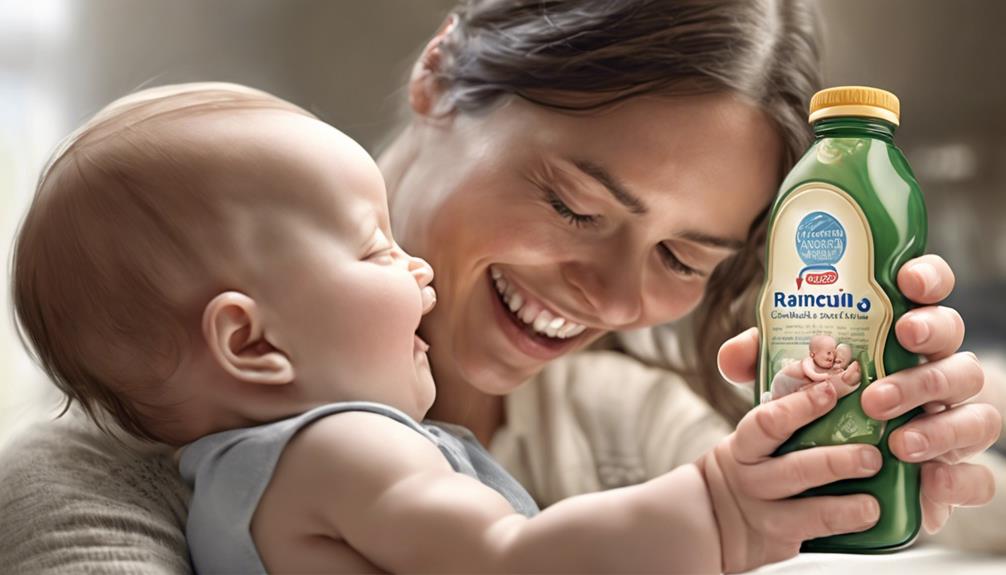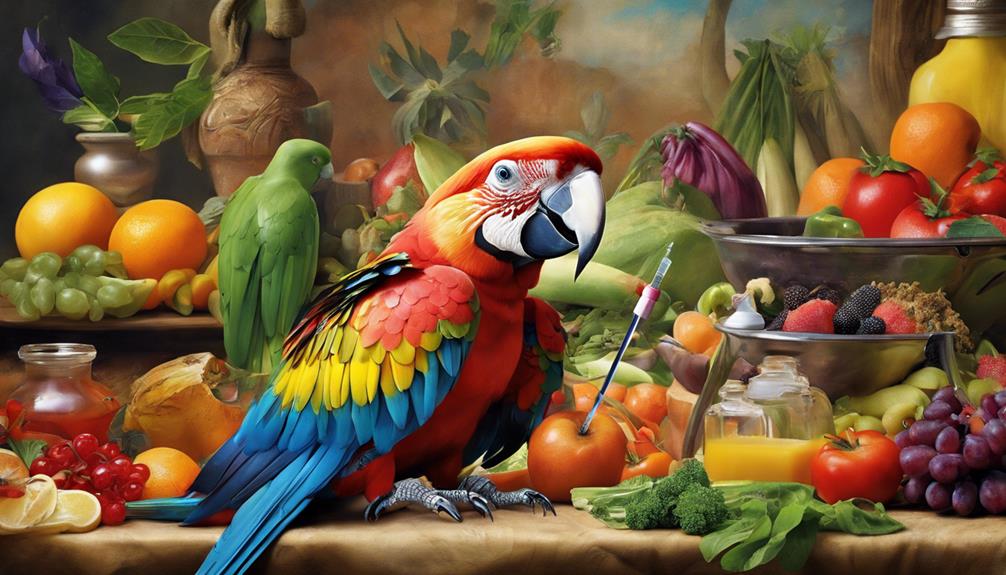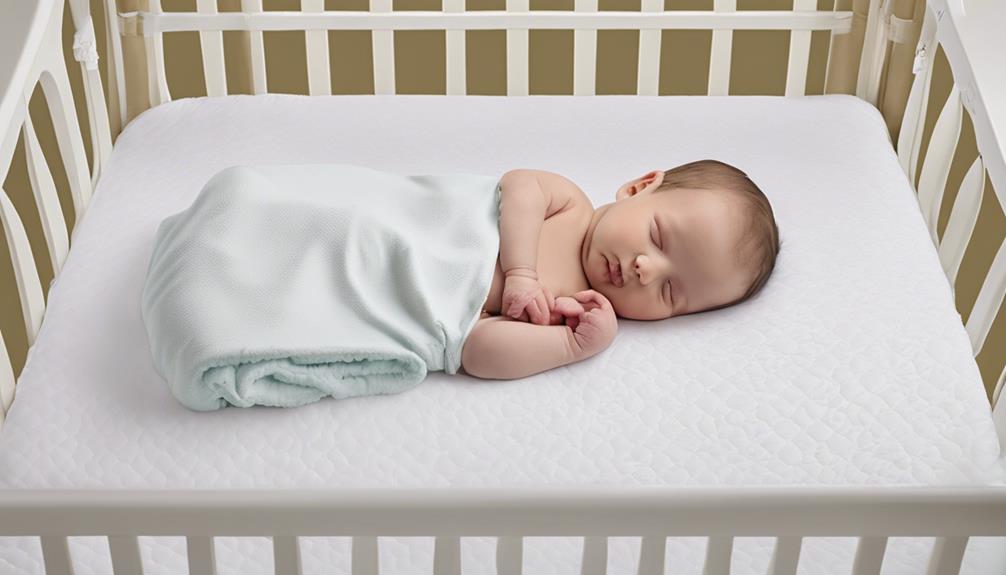In the world of caring for babies, it is often said that ‘prevention is better than cure.’ When it comes to giving your baby cold formula, proper preparation and handling are essential for your child’s health.
From storing the formula correctly to testing its temperature, each step is vital. But what about the nuances of feeding cold formula to your baby? Let's navigate through the intricacies together, uncovering essential tips and guidelines that can help you master this aspect of caregiving with confidence.
Key Takeaways
- Store refrigerated formula for up to 24 hours for freshness.
- Warm cold formula by placing the bottle in warm water.
- Test formula temperature on your wrist before feeding.
- Mix formula thoroughly and consider your baby's preference for temperature.
Storing Cold Formula Safely
When storing cold formula safely, it's essential to make sure that the refrigerated formula is sealed in a clean, sterilized bottle. This practice helps maintain the freshness and quality of the formula, ensuring it remains safe for consumption by newborns. Cold formula can be stored in the refrigerator for up to 24 hours after preparation, providing a convenient option for feeding times.
Newborns may initially prefer warm formula, but cold formula can be gradually introduced into their feeding routine. Before feeding, it's important to gently warm the refrigerated formula to the desired temperature. Placing the sealed bottle in warm water can effectively and safely warm the formula, making it more appealing for your baby without compromising its nutritional value.
Preparing Cold Formula Correctly

To guarantee the correct preparation of cold formula, storing boiled water in the fridge for subsequent warming is a recommended practice. When it's time to prepare the formula, start by making sure you have the correct ratio of water to powder as indicated on the formula tin.
Begin with cold water from the fridge to make your baby's formula. Measure the required amount of water and mix it with the formula powder according to the instructions. Remember that cold formula may be suitable for babies comfortable with room temperature liquids, but newborns might prefer warmer formula initially.
After mixing, the first step is to warm the formula by placing the bottle in a jug of warm water, avoiding microwaves that can create hot spots. Once the formula reaches a comfortable temperature, test it on your wrist to make sure it's not too hot for your little one. Taking these steps will help you efficiently prepare cold formula for your baby in no time.
Testing Formula Temperature
Testing the formula temperature is important to make sure it's safe and comfortable for your baby before feeding. To do this, start by washing your hands thoroughly.
Once the formula is prepared, fill a baby bottle with the desired amount and cap it securely. Next, run cold water over the outside of the bottle to cool it down quickly. Shake the bottle gently to distribute the temperature evenly.
Now, the critical step: testing the formula temperature. Place a few drops on the inside of your wrist where your skin is most sensitive. The formula should feel warm, similar to body temperature, not hot. This ensures it won't burn your baby's delicate mouth.
Feeding Cold Formula to Baby

While some babies may prefer warm formula, feeding cold formula to your baby can be safe and suitable, particularly if they enjoy it at room temperature. When preparing formula, it is important to make sure the water you use is clean and at the right temperature. Here is a simple guide on how to feed cold formula to your baby:
| Step | Instructions |
|---|---|
| Check Formula Temperature | Make sure the temperature of the formula is appropriate for your baby's preference. |
| Mix the Formula | Guarantee you mix the formula thoroughly to prevent clumps and ensure uniform consistency. |
| Shake the Bottle | Before feeding, shake the bottle gently to mix any settled contents for even distribution. |
Tips for Cold Formula Feeding
When feeding your baby cold formula, it's important to ponder some helpful tips to guarantee a smooth and safe feeding experience.
Cold formula can be a suitable option for babies if stored correctly in the refrigerator for no more than 24 hours. While newborns may initially prefer warm formula, cold formula typically doesn't upset their stomach.
If you wish to warm cold formula slightly, consider running warm water over the bottle or placing it in a container of warm water for a few minutes. It's vital to avoid using the microwave as it can create hot spots that may harm your baby.
Pay close attention to your baby's cues and preferences regarding formula temperature to make they're comfortable during feeding time. By storing, handling, and warming cold formula correctly, you can provide your baby with a safe and enjoyable feeding experience.
Frequently Asked Questions
How Do You Give a Baby Cold Formula?
When giving a baby cold formula, we make sure it's safe by checking the temperature beforehand.
It's crucial to mention that babies can consume cold formula straight from the refrigerator. Some babies even prefer it cold.
Always store unused formula in the fridge for up to 24 hours.
How Do You Give a Baby Refrigerated Formula?
When giving a baby refrigerated formula, remember to warm it gently. Placing the bottle in warm water or using a bottle warmer works best. Avoid microwaving to prevent hot spots.
Prior to feeding, always check the temperature on your wrist to make sure it's not too hot. If the formula has been sitting out for over an hour, discard it.
It's crucial to follow these steps for the baby's safety and comfort.
How Do I Transition My Baby to Cold Formula?
When shifting your baby to cold formula, start by gradually mixing room temperature formula with refrigerated formula. Monitor your baby's reaction and adjust the ratio based on their preference.
Offer small amounts initially to help them get used to the change. If your baby resists the cold temperature, consider using a bottle warmer to slightly warm the formula.
Be patient and consistent to help your baby adapt comfortably.
Does Cold Formula Need to Be Warmed?
Yes, cold formula doesn't require warming for most babies. It's safe and won't upset their stomach. Many babies happily drink it at room temperature.
If your little one prefers warm formula, gently warm the bottle in warm water. Avoid microwaving to prevent hot spots.
Varying the temperature can help prevent a strong preference for warm formula. Trust your baby's cues and find what works best for them.
Conclusion
To sum up, feeding your baby cold formula is a breeze with the right preparation and care.
Just like a gentle breeze on a warm day, following these step-by-step guidelines will make certain your baby receives nourishment safely and comfortably.
Remember to store, prepare, and test the formula with precision and care.
With these tips in mind, you can confidently feed your baby cold formula with ease and peace of mind.










